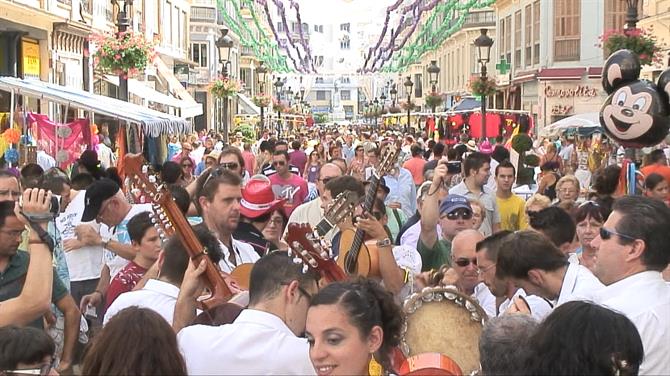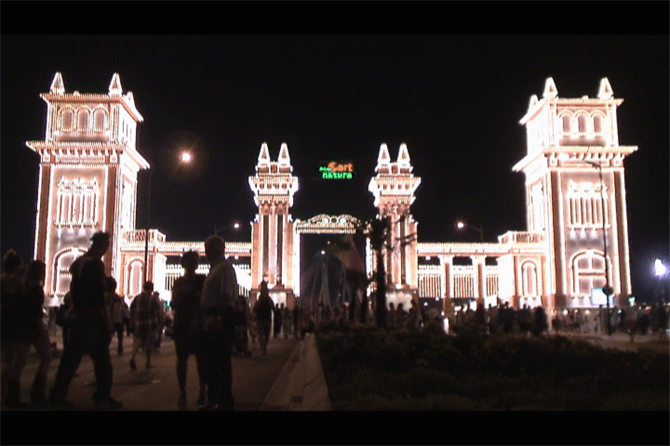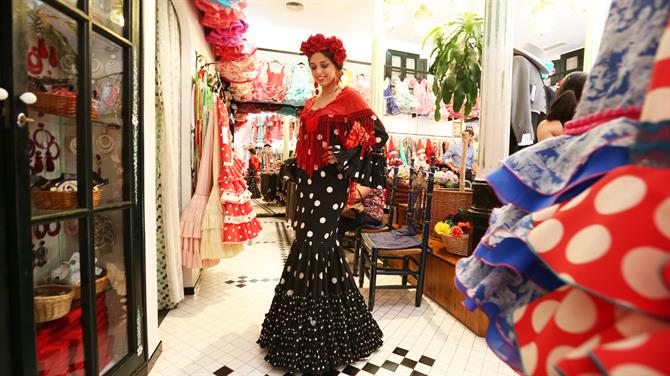The annual Malaga Feria (fair) takes place during the second or third week of August and is one of the biggest celebrations in the whole of Spain. The eight-day street party attracts millions of visitors from all over Spain every year.
The Feria celebrates the re-conquest of the city by Isabella and Ferdinand in 1487.
What is The Malaga Feria?

During the Feria, the popular, relaxed holiday destination of Malaga City becomes one huge impromptu party, the streets are filled with the sounds of flamenco music, traditional clothing and a crazy party atmosphere that cannot be missed.
Malaga's Feria - along with the more sombre Easter festival of Semana Santa - are the two most anticipated events in Malaga's calendar.
Malaga Feria's Opening Ceremony
The opening ceremony takes place on the Friday evening on the beaches of La Malagueta, which are just a short walk from the city centre.
The formalities are the same every year and start with the traditional Pregón de la Feria - the opening speech. A huge firework display starts immediately afterwards and is followed by a free concert on the beach.
The official ceremony usually takes place the following Saturday night, when the Mayor of Malaga declares the official start to the festivities by lighting the Feria lights.
The party continues uninterrupted until the Sunday of the following week.
The Feria Ground

The Malaga Feria is divided into two parts, the traditional daytime festivities and the nighttime party. The daytime event takes place in and around the historical centre and goes on until about 6pm every day.
At night the party moves onto the purposely built fairground just outside of Malaga. There are regular shuttle buses to and from the city centre.
The Feria ground is basically a pop-up "city within a city" with all types of fairground rides and attractions, flamenco shows and more than 300 casetas (stalls) that offer music, food and drinks.
A visit to the Malaga Feria is a must-do for anyone on holiday in Malaga or in the surrounding area of the Costa del Sol. It really is a party not to be missed.
Andalusians are known the world over for their love of a good party and nowhere is that more apparent than during the Feria of Malaga.
Traditional Dress of the Feria
It's not just the Feria itself that has become huge and exciting tradition within Spain, there are a number of smaller, interesting aspects to be uncovered if you dig a little deeper, such as decoration, music and drinks.
One of these fantastic traditions is the authentic dresses and costumes worn by both women and men. The dresses worn by women and girls are known as "traje de flamenca" or "flamenco dress" and are believed to originate from Seville and as such, are also known as "traje de Sevillana" or "traje de gitana" which translates to "gypsy dress".

It is believed that a modest version of these dresses were originally worn by gypsy women in Spain. Over time, the style was adopted and elaborated by women of all classes, transforming the basic dresses into the beautiful, flamboyant shapes and designs we see today. They are usually floor-length, figured-hugging styles with frills and ruffles beginning at the knee, a style which allows freedom to move and dance.
The dresses come in all colours, styles and patterns including polka dot, lace, pinstripe, floral print and more. They are usually accompanied by a delicate, embroidered shawl worn over the shoulders and bright flowers in the hair.
Spanish women and girls take great pride in picking out and wearing their Feria dresses, often spending hundreds or thousands of euros on the perfect dress and matching accessories. The dresses are worn for many years, continuously being altered throughout the wearers lifetime to maintain the perfect fit and shape.
Where is it exactly?
The daytime city party is concentrated around the squares of Plaza de la Merced, Plaza de la Constitución, Calle Larios, Plaza de la Marina and the surrounding streets.
The fairground, although open throughout the day, starts getting really busy at night. It is located on the Camino de San Rafael, which is about 3km west of the city centre and includes parts of the Palacio de Congresos y Ferias.
Getting to the fairground couldn't be easier with shuttle buses leaving every few minutes from the Alameda Principal (just next to Calle Larios), which is the main road in the city centre. The buses run 24 hours a day during of the Feria.
